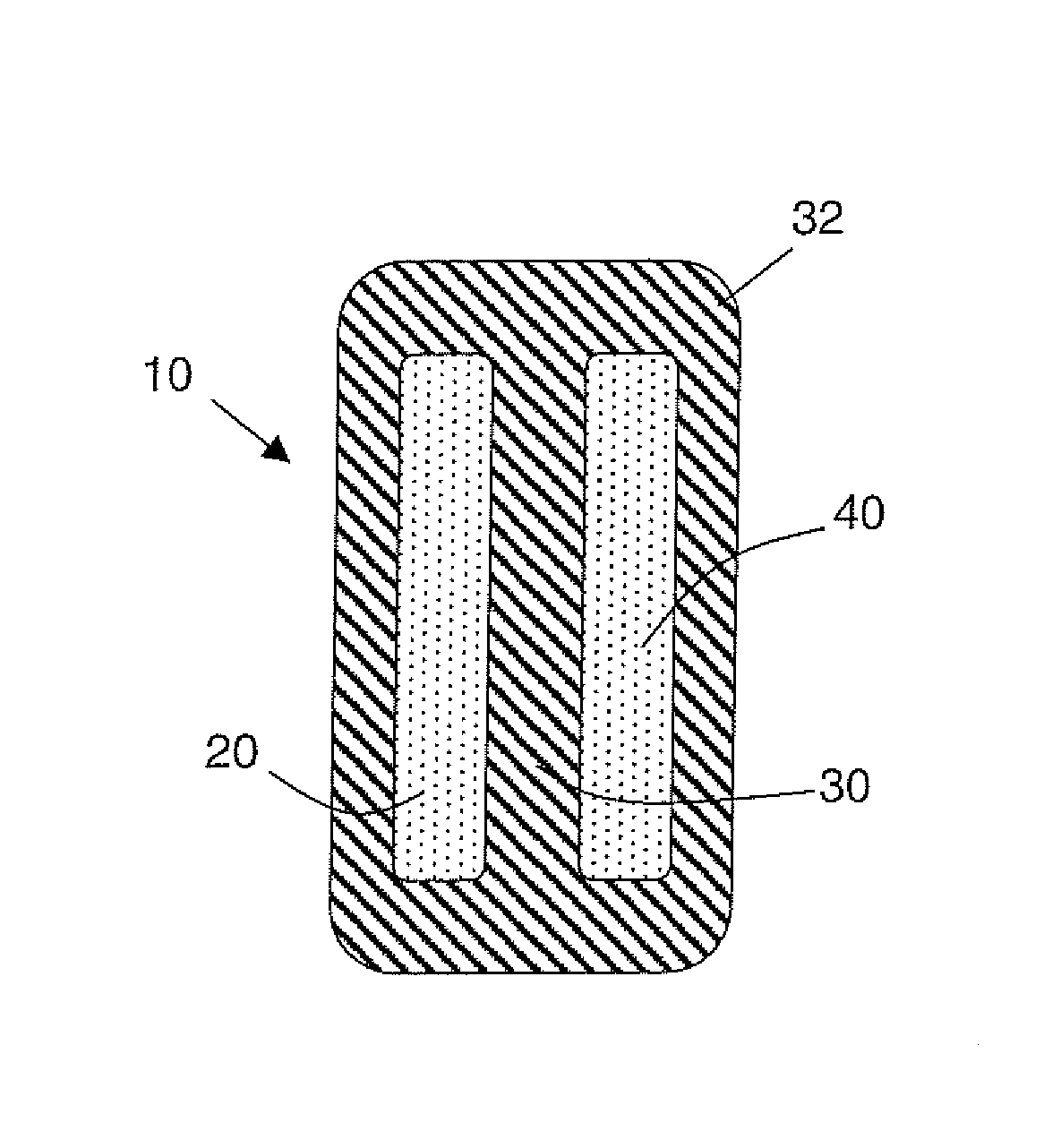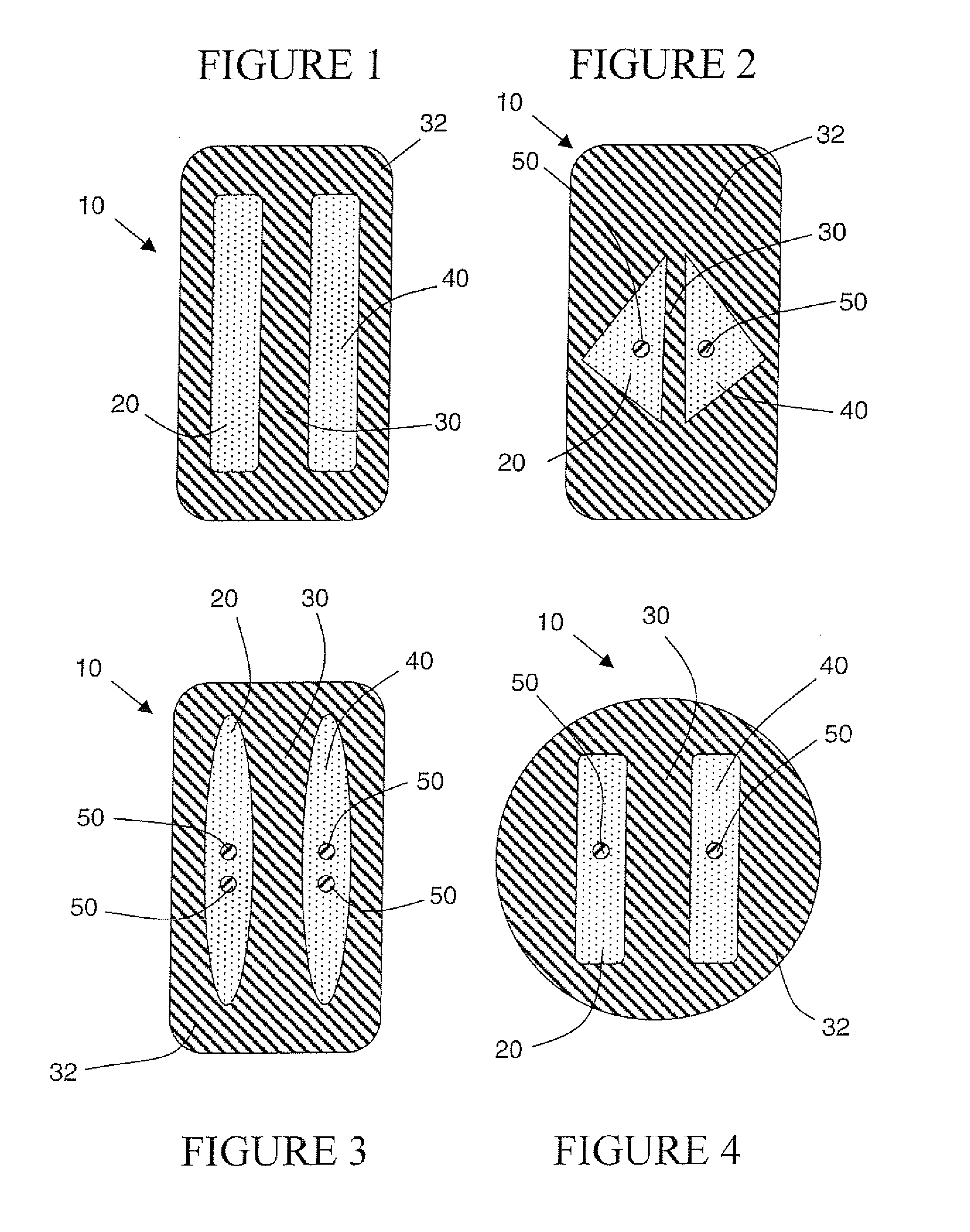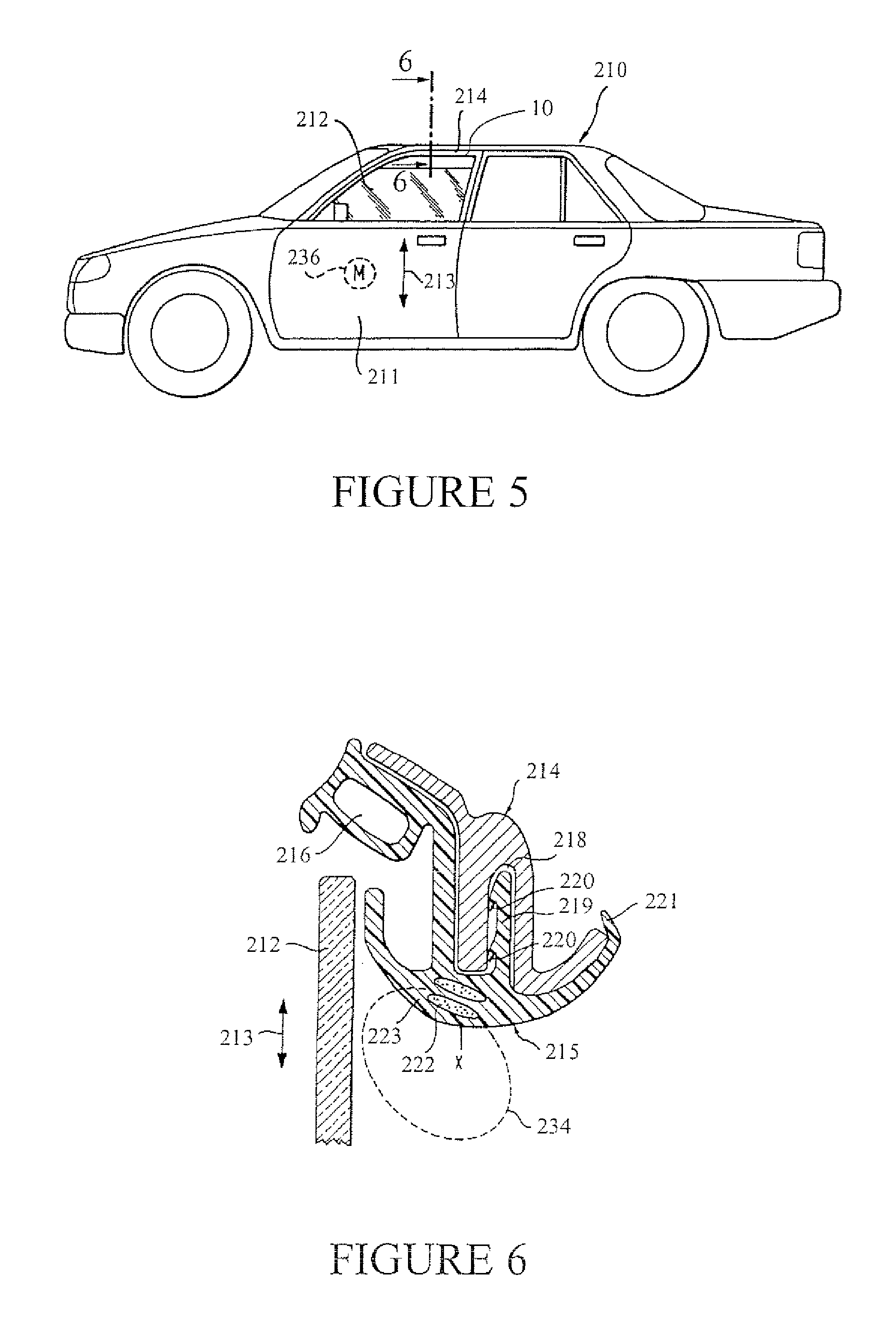Capacitive sensor having flexible polymeric conductors
a polymer conductor, capacitive sensor technology, applied in the direction of fixed capacitor details, feed-through capacitors, instruments, etc., can solve the problems of reducing the sensitivity of capacitive sensors, and affecting the detection efficiency of capacitive sensors. , to achieve the effect of improving sensitivity, enlarging the cross-section, and changing the shap
- Summary
- Abstract
- Description
- Claims
- Application Information
AI Technical Summary
Benefits of technology
Problems solved by technology
Method used
Image
Examples
Embodiment Construction
[0028]Referring to FIGS. 1–4, a capacitive sensor 10 includes a first polymeric conductor 20 and second polymeric conductor 40 and an intermediate non conductive (insulating) web 30, wherein a separation distance between the first and the second polymeric conductor is substantially fixed.
[0029]The polymeric conductors 20, 40 can have any of a variety of cross sections. For example, the cross-sections can include, but are not limited to rectangular, square, round, oval, curvilinear, or multifaceted. It is also understood the polymeric conductors 20, 40 can have cross-sections defined by any of a variety of letters such as, but not limited to “C”, “W”, “U” or “L”. The polymeric conductors 20, 40 can be symmetrical or asymmetrical relative to the web 30. A preferred cross-section is rectangular, wherein the height of the polymeric conductor is at least twice and can be as many as 10 times the width of the conductor as seen in FIG. 1.
[0030]In certain configurations, it is desirable for ...
PUM
| Property | Measurement | Unit |
|---|---|---|
| radius | aaaaa | aaaaa |
| diameter | aaaaa | aaaaa |
| force | aaaaa | aaaaa |
Abstract
Description
Claims
Application Information
 Login to View More
Login to View More - R&D
- Intellectual Property
- Life Sciences
- Materials
- Tech Scout
- Unparalleled Data Quality
- Higher Quality Content
- 60% Fewer Hallucinations
Browse by: Latest US Patents, China's latest patents, Technical Efficacy Thesaurus, Application Domain, Technology Topic, Popular Technical Reports.
© 2025 PatSnap. All rights reserved.Legal|Privacy policy|Modern Slavery Act Transparency Statement|Sitemap|About US| Contact US: help@patsnap.com



